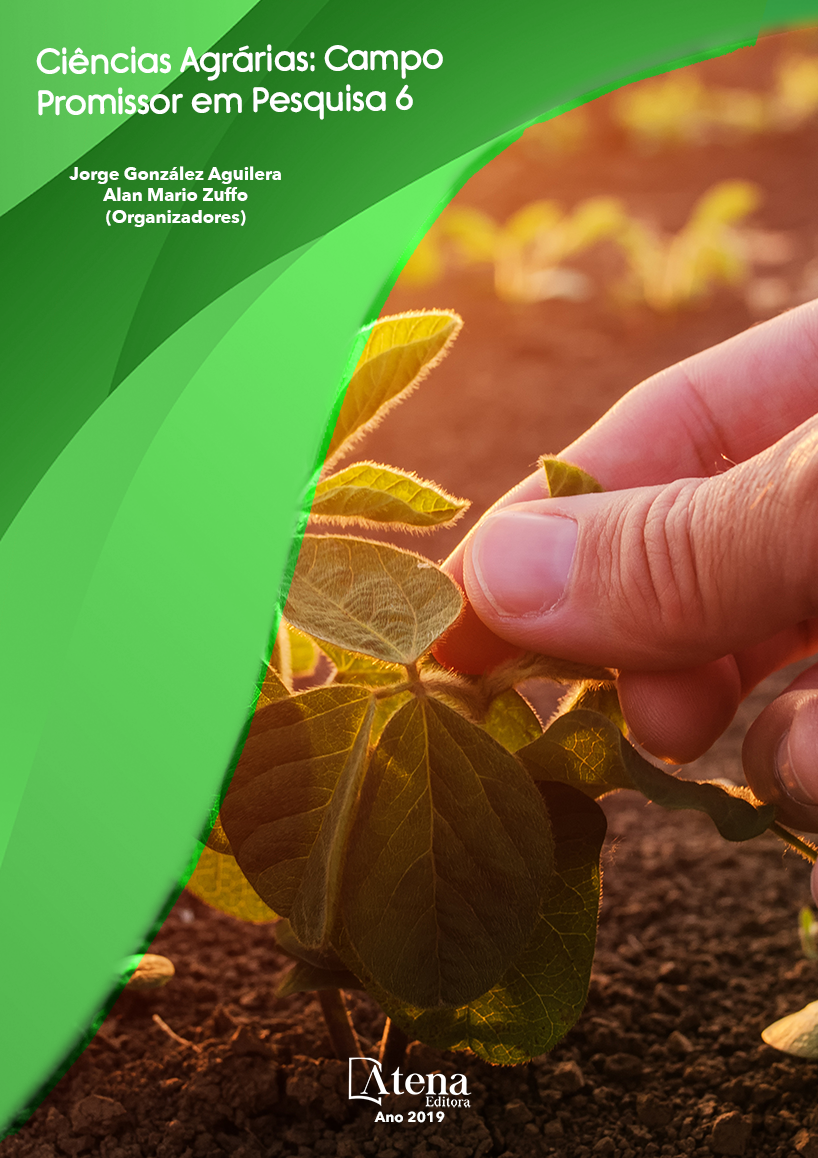
ORIGEM DE ESPÉCIES UTILIZADAS NA ARBORIZAÇÃO URBANA DO BAIRRO SANTA CLARA, MUNICÍPIO DE SANTARÉM-PARÁ
A arborização urbana é composta
por toda cobertura vegetal de porte arbóreo
presente nas zonas urbanas. Esta tem como
objetivo principal o enriquecimento da paisagem
e da qualidade do meio ambiente, como por
exemplo, o conforto através da regulação
climática, lazer e sombra às ruas e avenidas
das cidades, além de funções estéticas. Os
dados foram coletados no período de julho
a agosto de 2018, em planilhas estruturadas
com as seguintes informações: diâmetro a
1,30m do solo, altura total em metros, nome
vulgar, posição e sanidade da copa e do
fuste, afloramento e sanidade da raiz, fiação,
manejo e fenologia. O método de inventário
utilizado no levantamento do tipo censo. Foram
inventariados todos os indivíduos arbóreos e
não arbóreos com altura superior a 1,5m. A
freqüência relativa de cada espécie foi calculada
através da razão entre o número de indivíduos
da espécie e o número total de indivíduos do
bairro, multiplicada por 100. Quanto à origem
das espécies, consideraram-se nativas aquelas
originárias de formações vegetais ocorrentes no
Brasil, cujos ecossistemas estão representados
na região norte. Após a coleta de dados, as
informações foram tabuladas no Microsoft
Excel. Foram inventariados 411 indivíduos,
perfazendo 28 espécies e 14 famílias, sendo
Fabaceae a família mais representativa, com
35,71% do total e a espécie exótica Mangueira
a mais frequente, com 34,55% do total. Há um
predomínio de indivíduos de espécies exóticas
na arborização, causando a desvalorização
flora nativa local que possui espécies de grande
potencial para arborização urbana no bioma
Amazônia.
ORIGEM DE ESPÉCIES UTILIZADAS NA ARBORIZAÇÃO URBANA DO BAIRRO SANTA CLARA, MUNICÍPIO DE SANTARÉM-PARÁ
-
DOI: 10.22533/at.ed.20719210613
-
Palavras-chave: Amazônia, Exóticas, Mangueira, Nativas
-
Keywords: Amazon, Exotic, Mangueira, Native
-
Abstract:
The urban afforestation is composed of all vegetation cover of trees
present in urban areas. Its main objective is the enrichment of the landscape and the
quality of the environment, such as comfort through climate regulation, leisure and
shade to the streets and avenues of cities, as well as aesthetic functions. The data
were collected from July to August 2018, in spreadsheets structured with the following
information: diameter at 1,30m of soil, total height in meters, common name, position
and health of crown and stem, outcrop and sanity of root, spinning, management and
phenology. The inventory method used in the census type survey. All tree and nonarboreal
individuals with a height above 1.5m were inventoried. The relative frequency
of each species was calculated by the ratio between the number of individuals of the
species and the total number of individuals in the neighborhood, multiplied by 100.
Regarding the origin of the species, those originating from plant formations occurring
in Brazil were considered native, whose ecosystems are represented in the northern
region. After data collection, the information was tabulated in Microsoft Excel. 411
individuals were inventoried, accounting for 28 species and 14 families, with Fabaceae
being the most representative family, with 35.71% of the total and the exotic species
Mangueira being the most frequent, with 34.55% of the total. There is a predominance
of individuals of exotic species in the afforestation, causing the devaluation local native
flora that has species of great potential for urban afforestation in the Amazon biome.
-
Número de páginas: 15
- Marina Gabriela Cardoso de Aquino
- Jaiton Jaime das Neves Silva
- Wallace Campos de Jesus
- Pedro Ives Souza
- Mayra Piloni Maestri


